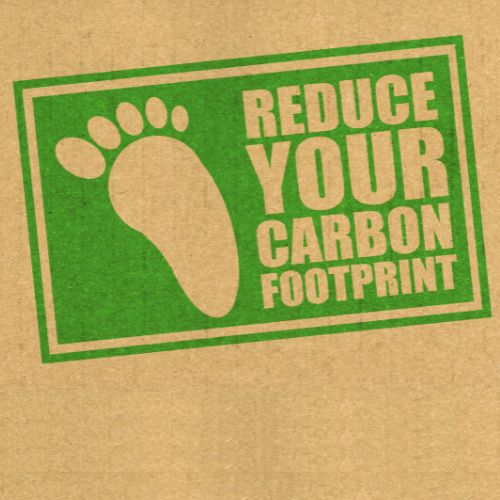
How to Reduce Your Carbon Footprint: A Step-by-Step Guide
Reducing your carbon footprint is one of the most impactful actions you can take to help protect the environment and combat climate change. By making mindful choices in your daily life, you can contribute to the global effort to lower greenhouse gas emissions. This guide breaks down practical ways to reduce your carbon footprint, with easy-to-follow steps that anyone can implement. Let’s explore how small changes can make a big difference.
What is a Carbon Footprint?
A carbon footprint refers to the total amount of greenhouse gases, primarily carbon dioxide (CO2), that are released into the atmosphere as a result of human activities. These emissions come from things like driving a car, using electricity, and even the production of the food we eat. Every individual, company, and country has a carbon footprint, and reducing it is key to slowing the progression of climate change.
Step 1: Reduce Energy Consumption at Home
Our homes are significant sources of carbon emissions, mostly from electricity and heating. Fortunately, small adjustments can lead to substantial reductions in energy use.
Tips for Reducing Energy Use:
- Switch to Energy-Efficient Appliances: Look for appliances labeled with the Energy Star rating. These products use less electricity, which means fewer emissions.
- Use LED Light Bulbs: LED bulbs use up to 75% less energy than traditional incandescent bulbs and last much longer.
- Unplug Devices When Not in Use: Electronics continue to draw power even when turned off. Unplugging chargers, computers, and kitchen appliances when not in use can save energy.
- Insulate Your Home: Proper insulation helps keep your home warm in winter and cool in summer, reducing the need for excessive heating or cooling.
Step 2: Choose Sustainable Transportation
Transportation is one of the largest contributors to individual carbon footprints. The emissions from cars, planes, and other vehicles account for a significant share of global greenhouse gas emissions.
Tips for Greener Transportation:
- Walk or Bike for Short Trips: Not only does this reduce your carbon footprint, but it’s also great for your health.
- Use Public Transportation: Buses, trains, and subways are more energy-efficient per person compared to cars.
- Carpool: Sharing rides with others reduces the number of vehicles on the road, cutting down emissions.
- Consider Electric or Hybrid Vehicles: If you’re in the market for a new car, electric and hybrid vehicles are much more environmentally friendly than gasoline-powered cars.
Step 3: Adopt a Plant-Based Diet
The food we eat plays a significant role in our carbon footprint. Animal agriculture, particularly cattle farming, is a major source of methane, a potent greenhouse gas.
Tips for Sustainable Eating:
- Eat More Plant-Based Meals: Reducing your consumption of meat and dairy can significantly lower your carbon footprint.
- Choose Locally Grown Foods: Local produce doesn’t require as much transportation, which reduces emissions.
- Cut Down on Food Waste: Try to buy only what you need and store food properly to avoid spoilage. Wasted food often ends up in landfills, where it generates methane gas as it decomposes.
Step 4: Reduce, Reuse, and Recycle
The production of goods, from packaging to electronics, requires energy and raw materials. By reducing what you buy, reusing items, and recycling materials, you can help minimize emissions related to manufacturing and waste disposal.
Tips for Waste Reduction:
- Reduce Single-Use Plastics: Carry reusable bags, bottles, and containers to avoid plastic waste.
- Buy Second-Hand: Purchasing used items such as clothes, furniture, and electronics helps extend the life of products, reducing the need for new manufacturing.
- Recycle Properly: Follow your local recycling guidelines to ensure that materials like paper, plastic, and metal are disposed of in a way that allows them to be reused.
Step 5: Be Mindful of Water Usage
While water itself doesn’t contain carbon, the energy required to pump, heat, and treat water is often substantial. Reducing your water use can help lower your overall carbon footprint.
Tips for Water Conservation:
- Install Low-Flow Fixtures: Low-flow showerheads and faucets can reduce water usage without sacrificing performance.
- Fix Leaks: Even a small drip from a leaky faucet can waste gallons of water over time.
- Shorten Showers: Cutting back on your shower time can save both water and energy.
Step 6: Support Renewable Energy
Switching to renewable energy sources like wind, solar, or hydropower is one of the most effective ways to reduce your carbon footprint. Many utility companies offer options for purchasing energy from renewable sources.
Tips for Using Renewable Energy:
- Install Solar Panels: If feasible, installing solar panels on your home can significantly reduce your reliance on fossil fuels.
- Opt for Green Energy Plans: Some utility companies allow customers to choose renewable energy options, even without installing solar panels.
- Support Policies for Clean Energy: Advocate for local, national, and global policies that encourage the use of renewable energy and decrease reliance on fossil fuels.
Step 7: Offset What You Can’t Reduce
It’s not always possible to eliminate your carbon footprint entirely, but you can compensate for unavoidable emissions by investing in carbon offset programs. These programs fund projects that reduce or capture carbon emissions elsewhere, such as tree planting or renewable energy projects.
Tips for Offsetting Carbon:
- Choose Verified Programs: Look for carbon offset programs that are verified by credible organizations such as the Verified Carbon Standard (VCS) or the Gold Standard.
- Focus on Long-Term Solutions: Choose projects that focus on sustainable solutions, such as reforestation or renewable energy development.






